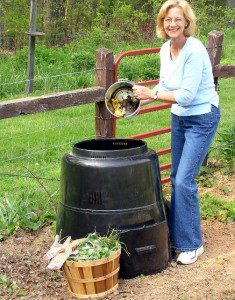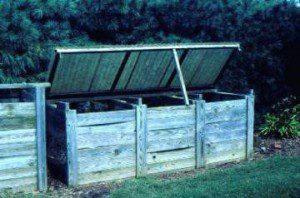YUCK!!! You want me to do what with that?
You may be skeptical about composting. The skepticism sounds healthy to me. Why would anyone want a big pile of rotting food in their yard or home? It doesn’t sound hygienic, and it doesn’t sound fun. But composting is good for everyone, but most importantly its GREAT for your plants.
Just a writers warning: it can become addictive. You’ll approach every scrap that comes out of the kitchen or out of your flower beds. I had doubts at first, more along the lines of not wanting to have to look at a pile of refuse, but once it got rolling, it was incredibly gratifying, being able to use compost made kind of with my own two hands. The flowers thank me too!
So, lets reduce your waste, (not waist)!
LETS GET YOU STARTED!
First off, lets determine what method of compost pile (or tumbler) is best for you. Not all compost is a big ugly pile of nasty food scraps, there are many devices you can use to avoid having to see your compost at all.
The Tumbler
The Tumbler is going to be the easiest on your back and eyes. It mimics a bingo ball spinner and agitates the compost inside by spinning and churning it using good old gravity and centrifugal force. This is also the most hygienic way of making your own brown goodness, keeping all of your debris locked up tight, which also increases the temperature of the compost, which in turn speeds the rate of decomposition. You can have compost in as little as 8 weeks!
Heaps
Its kind of a fun word to say, and really, this is my favorite method of composting because it doesn’t require any extra materials. To successfully use a heap method of composting, walk out in your yard and see if you can spot a good, sunny, out of the way location that is at least 5′ by 3′. You can add additional heaps if you’re over zealous, but start with one and get your feet wet. Compost heaps break down pretty quickly, but of course, they’re in plain view of god and everybody. Of course this isn’t recommended for small residential lots or apartments. Turning a pile is optional, but in the long run it with speed the decomposition rate of the inner core, which is really where the “compost happens”
Holding Units
Last but not least, you can implement a holding unit. Holding units are also aesthetic to the eye, but on the downside they’re not the easiest to turn. The use of a compost unit is more geared toward people that have a leisurely approach to composting, people that don’t mind waiting longer to reap the benefits of their labors. Break down occurs in layers and usage of the compost depends on the materials placed inside. The lid deters rodents, but it also eliminates the activity of good garden bugs like earthworms. Lids aren’t necessarily required, like in the case of a wire framed holding bin. Holding units can be constructed with stuff laying around the house too, old lumber (untreated), chicken wire, old cinder blocks, I’ve even seen people use a stack of old car tires.
Tools needed to keep your compost pile are going to vary depending on which method you take. A good rule of thumb is to set yourself up with good digging fork (it kind of looks like a baby pitch fork), a good shovel, and a harvesting basin to transport your compost from point A to point B.








